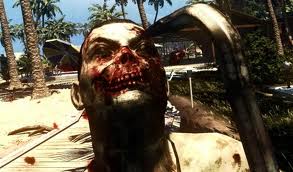
Dead Island - Zombie video game
 Did Navy Yard Shooter Answer His ‘Call of Duty’?
Did Navy Yard Shooter Answer His ‘Call of Duty’?
By Susan D. Harris
“Target down. I think you blew off his arm. Shock and blood loss will take care of the rest.” — Captain MacMillan after the player snipes Imran Zakhaev in the video game, Call of Duty
Correlations between real-life violence and violence in television or video gaming have historically been controversial. The links to increased aggression and hostility are not. It is unsettling that mass murderer Anders Breivik was a Call of Duty enthusiast, and that Newtown shooter Adam Lanza was obsessed with video games. Now we hear from his friends that AaronAlexis, the man behind Monday’s deadly rampage at the Washington Naval Yard, was addicted to video games including Call of Duty and violent zombie video games.
According to Call of Duty publisher, Activision, the game has had 100 million players and 32 quadrillion shots fired to date. Lazygamer.net says that is “more than the populations of some of the worlds most populated countries. All of that equates to over 32 quadrillion digital shells spent.” They add, “that the total number of hour’s people have played Call of Duty, all put together, is longer than all of human history.
Maybe it’s time to pay attention.
Concerns about video gaming have thus far focused on children and young adults – and even those studies have been sparse or limited.
Dr. Douglas Gentile, in a 2009 research article, discussed “Pathological Video-Game Use Among Youth Ages 8-18.” In a study of 1,178 American youth, about 8% showed pathological patterns of play. While a parent may be concerned about their child spending too much time playing video games, defining “addiction” is a different matter. According to psychiatric and psychological experts, an addiction “has to damage multiple levels of functioning, such as family, social, school, occupational, and psychological functioning.” Indeed the children identified as pathological gamers received poorer grades in school and exhibited “attention problems.”
The truly unchartered waters are studies on the effects of video gaming on adults, or adults with mental illness.
While Aaron Alexis seems to have had many issues that would have contributed to his undertaking a mass slaughter, it should be no small caveat that some of his friends expressed concern about his violent video gaming habits.
One could argue that such video games provide a safer outlet for those people who in years past would have been riding through the old west; challenging everyone to a duel and leaving a dusty trail of dead desperados in their wake.
The chicken and the egg conundrum comes into question as well. Is a person drawn to these video games because there already exists a predisposition to the dark side, or does the video game invite an otherwise healthy mind to enter the abyss? It may be too late to find out. Consider, for instance, a generation that has grown up playing video games in what seems like a mass experiment of gaming effects on the developing brain. For many gamers, the only benefits they’ve reaped were grooming themselves for a career in video gaming. Many parents even boast their child excels in gaming, leaving listeners wondering whether they should be impressed or appalled.
Welcome to the cultish world of video gaming. If you think LoL means “laugh out loud,” instead of League of Legends, you are behind the times. If you don’t know that OOM means “Out of Manna” or that “Blue” is an ancient golem that gives lots of manna “regen;” or that “Baron” is the massive dragon with the red skull and crossbones in the river…you are missing out on a worldwide delirium that is League of Legends. It has currently surpassed World of Warcraft, and at last check had more daily players than Call of Duty. Luckily, violence in the free, online game League of Legends pales in comparison to popular virtual blood sports like Condemned 2: Bloodshot, God of War and the ever popular Soldier of Fortune, among others.
If all this sounds Greek to you, check out the online conversations between gaming enthusiasts. You can go to special boards or forums to discuss the Summoner’s Rift, The Howling Abyss (ARAM) or Dominion (LoL’s “Capture and Hold” game mode.) The marketing of related clothing, toys and accessories is a booming internet money-maker as well.
And what of desensitization? How long can we assume that “kills” online are easily differentiated from reality when a young, mentally unstable, or even a healthy adult has spent thousands of hours obsessed with a virtual world? Can we be sure they are capable of real human empathy when they’ve spent every spare minute interacting emotionally with invisible players, and obsessing over their strategies and kills online?
Did Aaron Alexis survey the cafeteria below him as if he were using his Call of Duty Killcam? Did his unstable mind, in addition to hearing voices, also hear the increasing pitch of a beeping Heartbeat Sensor that allowed him to track multiple targets?
With Americans becoming increasingly depressed in a debilitating economy, abusing prescription and street drugs, and falling through the cracks in a failing mental healthcare system; it would seem the last thing we need is a large part of the population honing their Hunter Killer Drone skills on an unsuspecting population. We’re already getting enough of that from our own government.
Read more: http://www.americanthinker.com/blog/2013/09/did_navy_yard_shooter_answer_his_call_of_duty.html#ixzz2fG7WQ1uX
Follow us: @AmericanThinker on Twitter | AmericanThinker on Facebook

Pic above: Dead Island – Popular Zombie video game – that’s actually mild compared to what is in many of these video games. Want to look at it for 18 hours a day?







